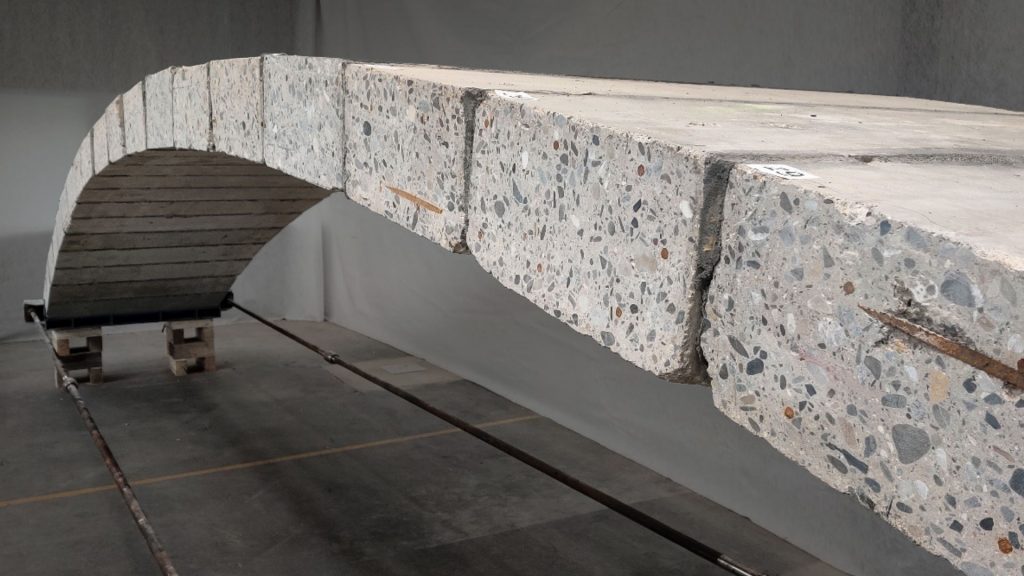
Summary
Concrete is today the most widely used construction material globally and the main cause of greenhouse gas emissions, material depletion, and waste generation by the construction industry. Typically, concrete waste resulting from building demolition is crushed and, at best, used as gravel or reclaimed into recycled aggregates to produce new concrete. In contrast, the direct reuse of concrete elements offers great potential for significantly reducing the environmental impact of concrete construction by applying the principles of circular economy.
To demonstrate this, the Sructural Xploration Lab (SXL) has built the RE:CRETE prototype, a footbridge built from 25 reused concrete blocks. The blocks were sawn out of 20-cm thick concrete walls, in a building being transformed. They were then reassembled into a post-tensioned arch spanning 10 meter. Mortar joints compensate the dimensional variations between the blocs, characteristic of the reuse practice. To measure the concrete strength, rebound-hammer measurements were carried out on the blocks. Following its assembly, and to validate the calculation models, the structure was loaded up to its design live load and the deflections were recorded.
The RE:CRETE footbridge marks the first time cast-in-place concrete elements have been reused and sets a new ambitious environmental benchmark for concrete structures. This prototype demonstrates that concrete reuse is safe and relevant and opens a whole new research field. Moreover, under this circular economy approach, building demolition companies – which until now have been at the end of the value chain – would also become producers, kicking off a new cycle.
General information
- PI: Maléna Bastien Masse (SXL / IA)
- Start date: 01.09.2021
- Duration: 4 months